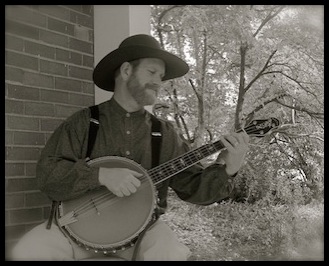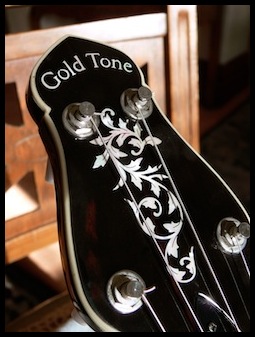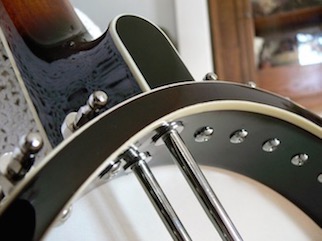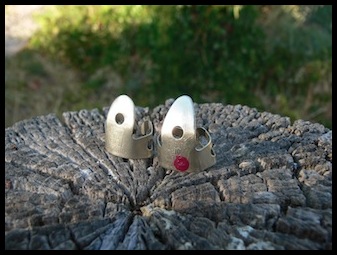Review: Gold Tone Cello Banjo
THE LOWDOWN ON THE LOW SOUND

Judy Muldaur, who had graciously let me conduct the workshop at her home, had in her possession a recently purchased Gold Tone cello banjo. Judy was very enthusiastic about her new acquisition and wanted my opinion. I can honesty say that my first reaction was surprise! Because of the low tuning and very wide neck, I was expecting the instrument to be cumbersome with a tone that was somewhat “mushy”. I couldn’t have been more wrong. It turned out that Judy’s cello banjo was very comfortable to play and had a very clear, defined tone. Like I said, I was surprised...
As you can see from the following video (thanks for posting this Judy), I knew instantly that this instrument would sound especially nice on "bluesy" tunes. Here’s a clip of the very first time I laid my hands on a cello banjo:
Having whetted my appetite in Albuquerque, it wasn't long until I had a cello banjo of my own. As I opened the case for the first time, I was struck by the design and the quality of workmanship displayed by this "import" banjo. With a peg-head reminiscent of the old Gibson "trap door" banjo, and with very tasteful inlay work, this banjo is simply gorgeous. (I would love to see Gold Tone come out with a new open-back utilizing this peg-head design in a banjo with a standard sized neck and pot.)

As for adjustability, my cello banjo had some "fret buzz" upon arrival and I was pleased to see that a slight turn of the truss rod quickly adjusted the neck relief and took care of the problem.
Strung with the recommended Gold Tone strings, the cello banjo produces plenty of volume for most situations. Unfortunately, mine isn't "most situations"...
As a singer, I need an instrument that can be played at low volumes with a very light touch.
Straight out of the box, I struggled a bit as this instrument was strung with heavy strings, tuned to low G, and wanted to be played hard and loud. To make the banjo more compatible with my playing style, I tried using the lighter strings (designed for "A" tuning) while keeping the banjo tuned to low "G". This gave me an instrument that responded well to a lighter touch, but it generated some string buzz whenever I decided to dig into the strings.

Possibly because of my light touch, I tend to use a right hand position that is farther from the bridge than is recommended on the Gold Tone website; but it's still much closer than the position I use on my other banjos . As always, I feel the individual player should experiment around until they find the best right hand positioning for their own personal style of play.
Here’s an example of why I need an instrument set up to play at lower volume levels:

As I mentioned earlier, the Gold Tone cello banjo is VERY comfortable to play. Here’s an example of a technically difficult tune played on the cello banjo; it handles it well...
It's been fun experimenting with the cello banjo and I'm looking forward to exploring it’s unique sound for years to come. Highly recommended for any adventurous souls looking to push the boundaries of clawhammer banjo technique...
Mike Iverson